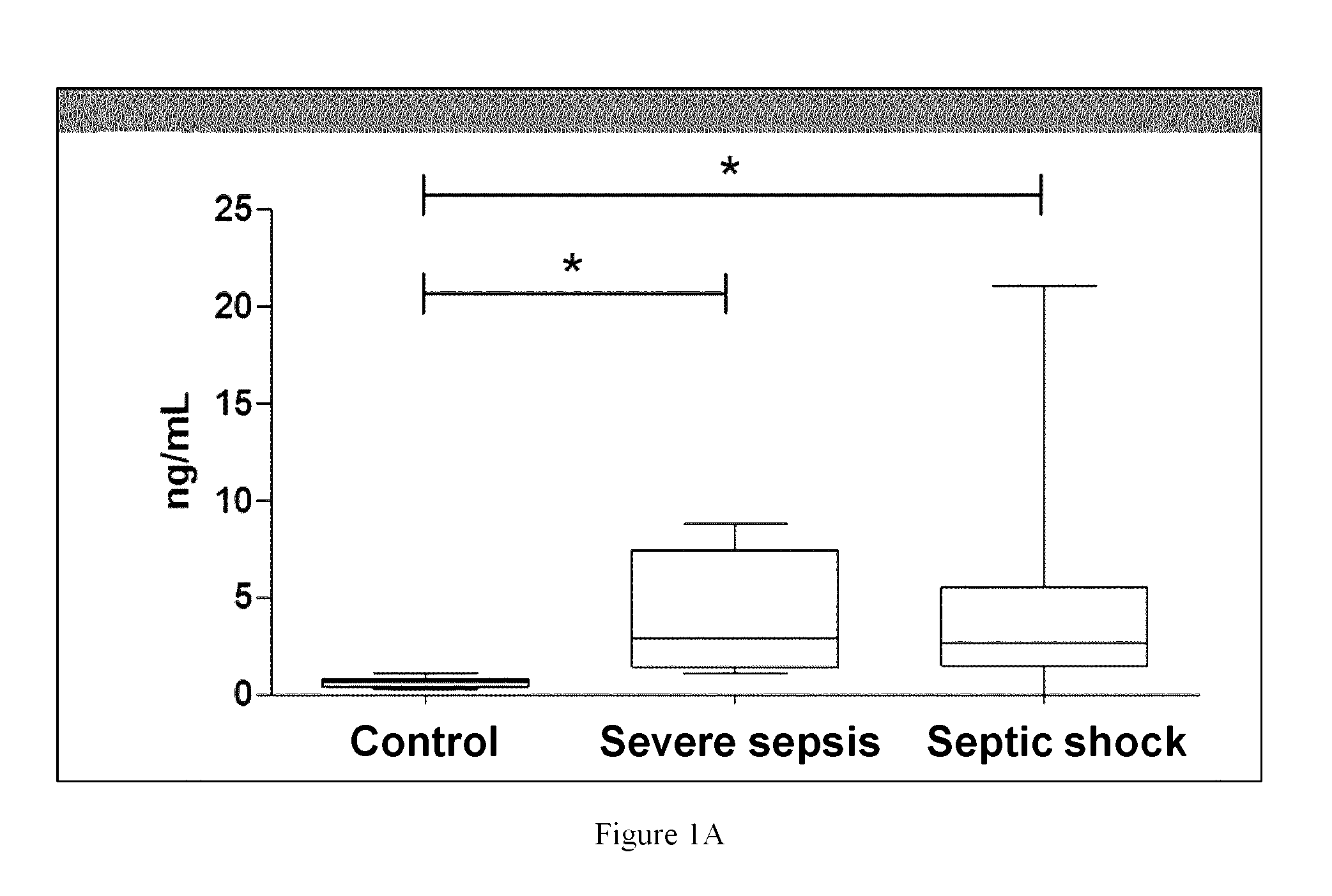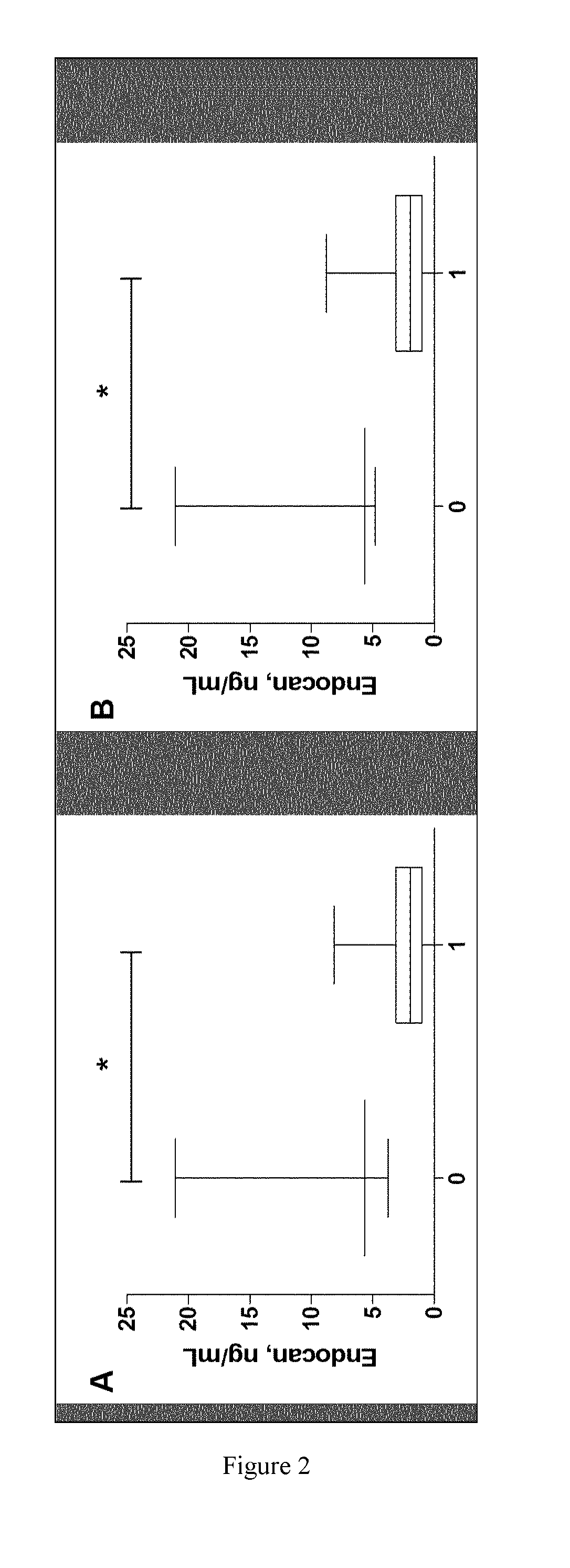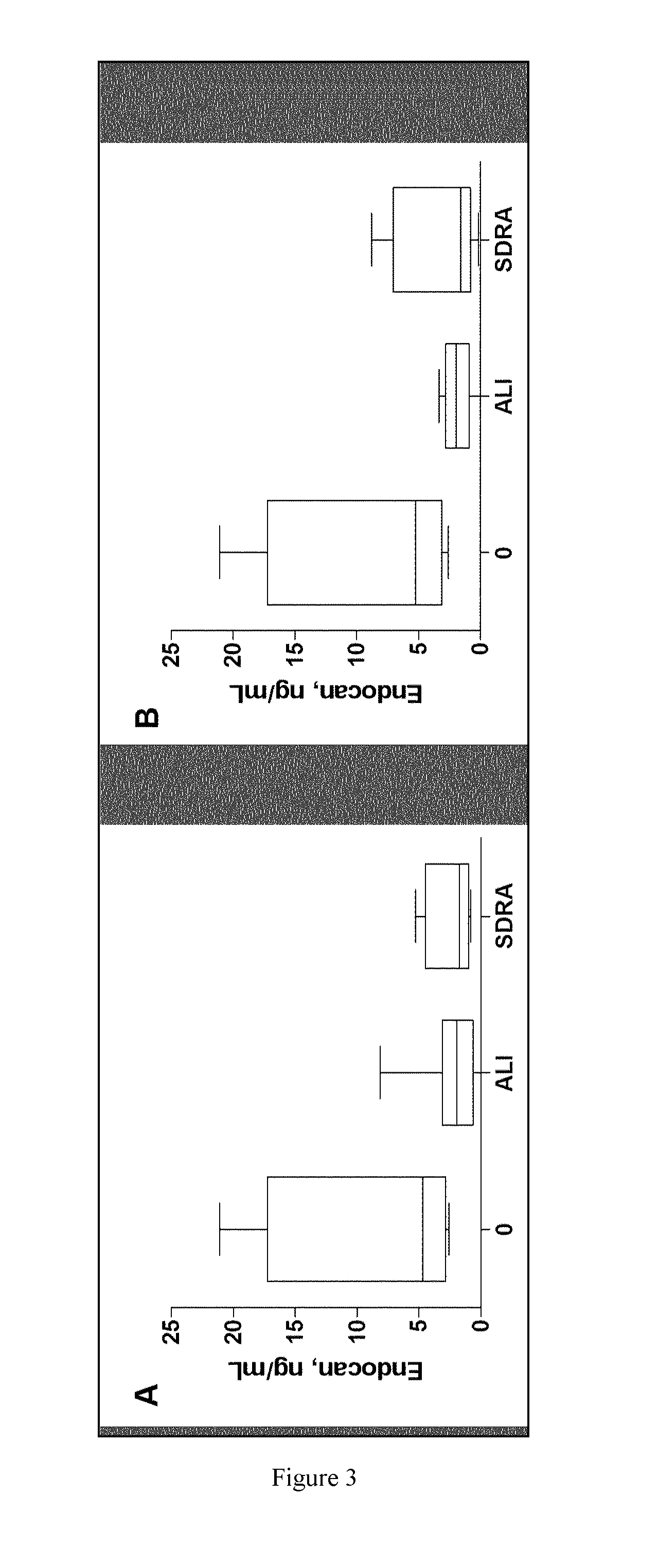Methods and kits for predicting the risk of respiratory failure, renal failure or thrombopenia in a septic patient by measuring endocan levels in blood
a technology of endocan and kit, which is applied in the field of kits for predicting the can solve the problems of admission and mortality, risk of respiratory failure, renal failure or thrombopenia in a septic patient has not yet been investigated
- Summary
- Abstract
- Description
- Claims
- Application Information
AI Technical Summary
Benefits of technology
Problems solved by technology
Method used
Image
Examples
example 1
[0035]The high level of blood endocan selects septic patients with respiratory failure (defined by Pa02 / Fi0220 mg / mL), and / or thrombopenia (Table 1).
TABLE 1E E > 3 ng / mLpDiuresis after1572 + / − 353 1330 + / − 145 Ns24 h(mL + / − sem)CRP176 + / − 19.84185 + / − 16.50Ns(mg / L + / − sem)PCT17 + / − 4.37 46 + / − 17.23Ns(ng / mL + / − sem)Platelets237600 + / − 27060 161400 + / − 16080 0.012( / mm3 + / − sem)Bicar24 + / − 0.6322 + / − 0.94Ns(moy + / − sem)Pa02 / Fi02237 + / − 21.15168 + / − 15.770.009(moy + / − sem)Creatinin13.5 + / − 1.42 20.9 + / − 2.27 0.015(mg / L + / − sem)ALAT32 + / − 6.62 89 + / − 41.71Ns(U / mL + / − sem)ASAT 60 + / − 16.20124 + / − 33.12Ns(U / mL + / − sem)TP (% + / − SD)57 + / − 16 53 + / − 22 Ns
example 2
Low Levels of Endocan Predicts the Respiratory Failure at 48-72 Hours Following ICU Admission in Patients with Severe Sepsis and Septic Shock
[0036]Introduction:
[0037]Acute lung injury (ALI) and acute respiratory distress syndrome (ARDS) are common clinical disorders characterized by alveolar epithelial and endothelial injury leading to the development of an acute respiratory failure. They are distinguished by pulmonary gas exchange. The term ALI refers to patients with a PaO2 / FiO2 ratio of <300 mmHg, whereas a ratio of <200 mmHg defines ARDS. Both ALI and ARDS may occur either as a direct pulmonary injury, such as pneumonia, aspiration, pulmonary contusion, or toxic inhalation, or an indirect extrapulmonary insult such as sepsis, which is the most prevalent and lethal cause of ARDS, but also multiple transfusions of blood products, acute pancreatitis, non-thoracic trauma with shock, disseminated intravascular coagulation (DIC). The incidence of ALI or ARDS was estimated 7.1% of all ...
PUM
 Login to View More
Login to View More Abstract
Description
Claims
Application Information
 Login to View More
Login to View More - R&D
- Intellectual Property
- Life Sciences
- Materials
- Tech Scout
- Unparalleled Data Quality
- Higher Quality Content
- 60% Fewer Hallucinations
Browse by: Latest US Patents, China's latest patents, Technical Efficacy Thesaurus, Application Domain, Technology Topic, Popular Technical Reports.
© 2025 PatSnap. All rights reserved.Legal|Privacy policy|Modern Slavery Act Transparency Statement|Sitemap|About US| Contact US: help@patsnap.com



